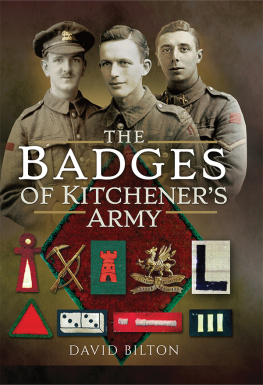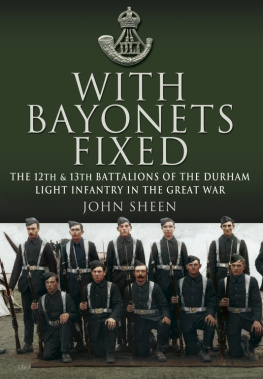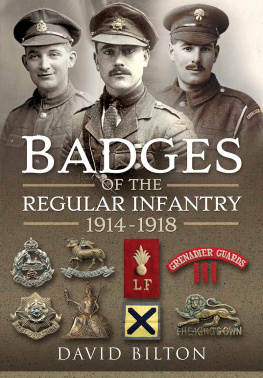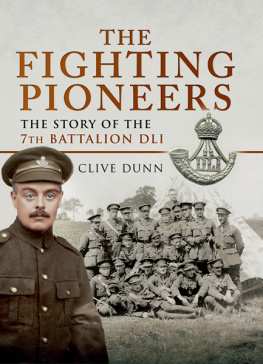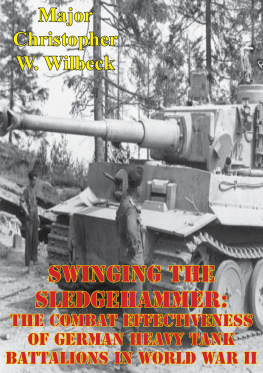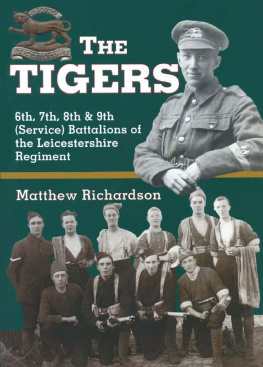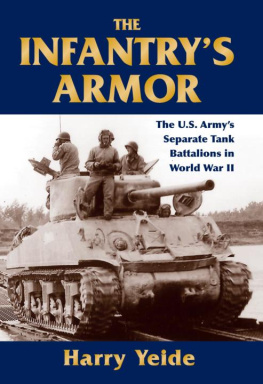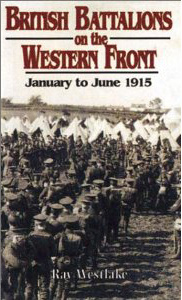PIONEER BATTALIONS IN THE GREAT WAR
PIONEER BATTALIONS
IN THE
GREAT WAR
Organized and Intelligent Labour
by
K.W. MITCHINSON
Published by Leo Cooper in 1997
and re-printed in this format in 2013 by
Pen & Sword Military
an imprint of
Pen & Sword Books Ltd
47 Church Street
Barnsley
South Yorkshire
S70 2AS
The right of K.W. Mitchinson to be identified as author of this work has
been asserted by him in accordance with the Copyright, Designs and
Patents Act 1988.
Copyright K.W. Mitchinson, 1997, 2013
ISBN:-978-1-78346-179-0
A CIP catalogue record for this book is available from the British Library.
All rights reserved. No part of this book may be reproduced or transmitted in any
form or by any means, electronic or mechanical including photocopying, recording
or by any information storage and retrieval system, without permission from the
Publisher in writing.
Printed and bound in the UK by CPI Group (UK) Ltd, Croydon, CRO 4YY
Pen & Sword Books Ltd incorporates the Imprints of Pen & Sword Aviation,
Pen & Sword Family History, Pen & Sword Maritime, Pen & Sword Military, Pen
& Sword Discovery, Wharncliffe Local History, Wharncliffe True Crime,
Wharncliffe Transport, Pen & Sword Select, Pen & Sword Military Classics, Leo
Cooper, The Praetorian Press, Remember When, Seaforth Publishing
and Frontline Publishing.
For a complete list of Pen & Sword titles please contact
PEN & SWORD BOOKS LIMITED
47 Church Street, Barnsley, South Yorkshire, S70 2AS, England
E-mail: enquiries@pen-and-sword.co.uk
Website: www.pen-and-sword.co.uk
CONTENTS
Many people and institutions have helped with the production of this book and their assistance is here gratefully acknowledged. In particular, Dr. Gwyn Bayliss, Rod Sudderby, Ian Carter and the staffs in the Departments of Printed Books, Documents and Photographs of the Imperial War Museum have, as usual, been of immense help. Permission to use the documentary and photographic collections held by the Museum and from those of the Public Record Office, the Light Infantry archives and the DLI Museum, has been granted by the Trustees of those bodies. Peter Liddle granted permission to use the papers of the Liddle Collection housed in the University of Leeds. My thanks too, to his staff who displayed great tolerance and understanding. Many regimental museums kindly responded to my enquiries regarding extant sources. Particular thanks are due to Colonel Cowley of the Light Infantry Office, Pontefract, Captain Bob Bonner, the Manchester Regiment and Steve Shannon of the DLI Museum. My appreciation too to the staff of the many libraries and archives who showed such patience and energy in pursuit of my enquiries. Numerous individuals have provided either help, encouragement or both, and several have allowed me access to documents in their personal possession. These include Dr. Roger Anderson, David Barlow, Nigel Cave, Michael A.Cooper and Sue Latimer. Finally, special thanks to JB.
ABBREVIATIONS
| ACI | Army Council Instruction |
| C.E. | Chief Engineer |
| C.O. | Commanding officer |
| CRA | Commander Royal Artillery |
| CRE | Commander Royal Engineers |
| CSM | Company sergeant-major |
| CCS | Casualty clearing station |
| DCM | Distinguished Conduct Medal |
| GOC | General officer commanding |
| G.S. | General service (wagon) |
| M.C. | Military Cross |
| MID | Mention in despatches |
| M.M. | Military Medal |
| M.O. | Medical officer |
| O.C. | Officer commanding |
| OTC | Officer training corps |
| R.E. | Royal Engineers |
| RQMS | Regimental quartermaster-sergeant |
| RSM | Regimental sergeant-major |
| W.D. | War Diary |
| W.O. | War Office |
NOTE: The designation of battalions throughout follows that of the Official History. Thus the 9th Battalion, The Border Regiment becomes 9/Border. Similarly, regimental spellings also follow Edmonds, James and Soldiers Died.
When the nations of Europe marched to war in August 1914, few on either side believed that it would last long. Modern technology, and the perceived superiority of one nations will over another, caused many to feel that the troops would be home before the end of the year. Previous wars involving Great Powers had indeed been fairly brief affairs. Despite the experience gained in the Russo-Japanese and Balkan Wars, some observers continued to argue that where large armies had the space to deploy and manoeuvre, modern artillery would not sufficiently dominate the battlefield to prevent an early decision. Some of the more perceptive realized that, short of a collapse of morale on one side, recent technological developments made the idea of a war of movement somewhat anachronistic.
The German assault upon France through Belgium and Luxembourg did almost bring a swift conclusion to the war. Fortunately for the Allies the Russian army in the east diverted significant German forces from their western offensive. As the BEF concentrated its divisions near the Franco-Belgian border, determined Belgian resistance at Namur and Liege further slowed the German advance. It was halted at the Marne in September, and later thrusts were repulsed at Ypres in October and November. With the failure to break the French within Schlieffens designated six weeks, and the coming of winter, the two sides paused and began to dig.
Meanwhile, Britain had become one huge recruiting camp. The small professional regular army was to be supplemented by an expanded Territorial Force and a massive new organization, known familiarly as Kitcheners New Armies. As it would take months (if not years) to house, equip and train this new force, more regular battalions were recalled from their Empire postings. Territorial units were either shipped out to replace them or, alternatively, to take their place alongside the regulars in the trenches abroad. For trenches was the word that was already beginning to dominate, at least temporarily, the minds of those who conducted the war. The war of movement had given way to a war of stalemate in which the exhausted armies glared and fired at each other from a rapidly growing system of trenches and breastworks. These hastily dug excavations were separated from each other by stretches of increasingly broken and disputed ground. The most pressing requirement for those occupying the trenches and manning the guns behind, was that the earthworks offer some protection from the shells which were daily directed against them. In the eyes of the Allied commanders these were never meant to be permanent constructions, but soon it became evident that the Royal Engineers and the infantry alone could not be expected to fight as well as maintain the burgeoning number of trenches and gun emplacements. Furthermore, the camps and railways under construction to accommodate and supply the growing armies were also absorbing an everincreasing amount of the scarce resources of available manpower.
In November 1914 the War Office began to consider how this dilemma could be solved. Its solution, announced to the GOCs commanding the various army groups in early December, was to create and post a Pioneer battalion to each division of the New Armies then forming in the U.K.(1)


